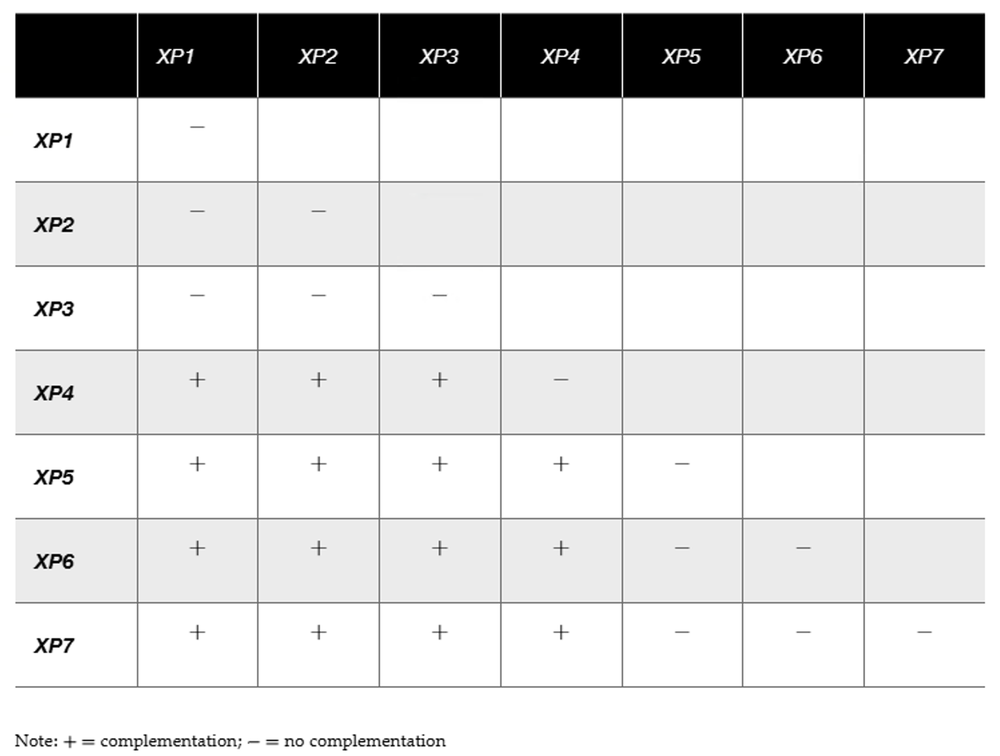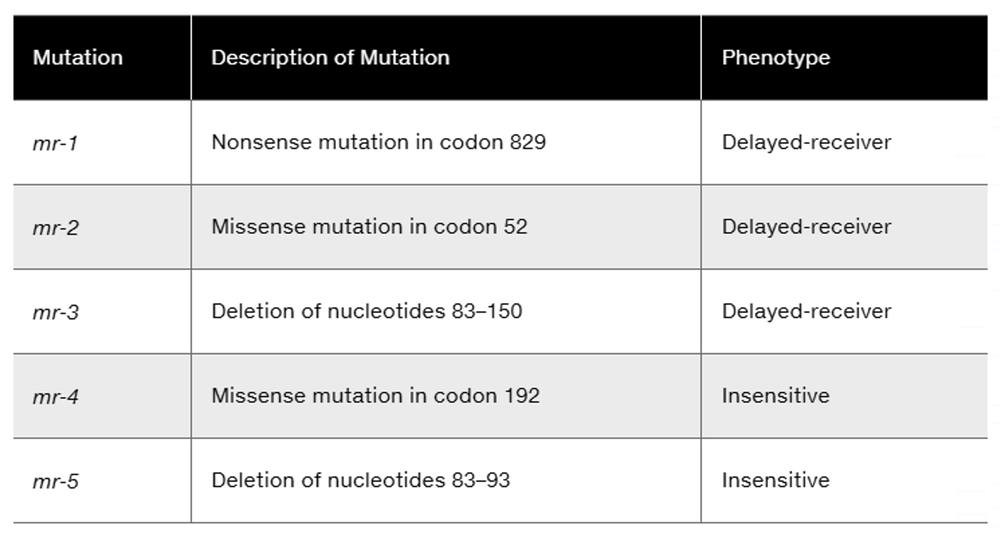 Back
BackProblem 1a
How do we know that mutations occur randomly?
Problem 1b
How do we know that certain chemicals and wavelengths of radiation induce mutations in DNA?
Problem 1c
How do we know that DNA repair mechanisms detect and correct the majority of spontaneous and induced mutations?
Problem 2
Write a short essay contrasting how these concepts may differ between bacteria and eukaryotes.
Problem 3
What is a spontaneous mutation, and why are spontaneous mutations rare?
Problem 4
Why would a mutation in a somatic cell of a multicellular organism not necessarily result in a detectable phenotype?
Problem 5
Most mutations are thought to be deleterious. Why, then, is it reasonable to state that mutations are essential to the evolutionary process?
Problem 6
Why is a random mutation more likely to be deleterious than beneficial?
Problem 7
Most mutations in a diploid organism are recessive. Why?
Problem 8
What is the difference between a silent mutation and a neutral mutation?
Problem 9
Describe a tautomeric shift and how it may lead to a mutation.
Problem 10
Contrast and compare the mutagenic effects of deaminating agents, alkylating agents, and base analogs.
Problem 11
Why are frameshift mutations likely to be more detrimental than point mutations, in which a single pyrimidine or purine has been substituted?
Problem 12
Why are X rays more potent mutagens than UV radiation?
- DNA damage brought on by a variety of natural and artificial agents elicits a wide variety of cellular responses involving numerous signaling pathways. In addition to the activation of DNA repair mechanisms, there can be activation of pathways leading to apoptosis (programmed cell death) and cell-cycle arrest. Why would apoptosis and cell-cycle arrest often be part of a cellular response to DNA damage?
Problem 13
Problem 14
Contrast the various types of DNA repair mechanisms known to counteract the effects of UV radiation. What is the role of visible light in repairing UV-induced mutations?
Problem 15
Mammography is an accurate screening technique for the early detection of breast cancer in humans. Because this technique uses X rays diagnostically, it has been highly controversial. Can you explain why? What reasons justify the use of X rays for such a medical screening technique?
Problem 16
A significant number of mutations in the HBB gene that cause human β-thalassemia occur within introns or in upstream noncoding sequences. Explain why mutations in these regions often lead to severe disease, although they may not directly alter the coding regions of the gene.
Problem 17
Describe how the Ames test screens for potential environmental mutagens. Why is it thought that a compound that tests positively in the Ames test may also be carcinogenic?
Problem 18
What genetic defects result in the disorder xeroderma pigmentosum (XP) in humans? How do these defects create the phenotypes associated with the disorder?
Problem 19
Compare DNA transposons and retrotransposons. What properties do they share?
Problem 20
Speculate on how improved living conditions and medical care in the developed nations might affect human mutation rates, both neutral and deleterious.
Problem 21
In maize, a Ds or Ac transposon can alter the function of genes at or near the site of transposon insertion. It is possible for these elements to transpose away from their original insertion site, causing a reversion of the mutant phenotype. In some cases, however, even more severe phenotypes appear, due to events at or near the mutant allele. What might be happening to the transposon or the nearby gene to create more severe mutations?
Problem 22
It is estimated that about 0.2 percent of human mutations are due to TE insertions, and a much higher degree of mutational damage is known to occur in some other organisms. In what way might a TE insertion contribute positively to evolution?
Problem 23
In a bacterial culture in which all cells are unable to synthesize leucine (leu⁻), a potent mutagen is added, and the cells are allowed to undergo one round of replication. At that point, samples are taken, a series of dilutions are made, and the cells are plated on either minimal medium or minimal medium containing leucine. The first culture condition (minimal medium) allows the growth of only leu⁺ cells, while the second culture condition (minimal medium with leucine added) allows growth of all cells. The results of the experiment are as follows:
What is the rate of mutation at the locus associated with leucine biosynthesis?
Problem 24
Presented here are hypothetical findings from studies of heterokaryons formed from seven human xeroderma pigmentosum cell strains:
These data are measurements of the occurrence or nonoccurrence of unscheduled DNA synthesis in the fused heterokaryon. None of the strains alone shows any unscheduled DNA synthesis. Which strains fall into the same complementation groups? How many different groups are revealed based on these data? What can we conclude about the genetic basis of XP from these data?
- Imagine yourself as one of the team of geneticists who launches a study of the genetic effects of high-energy radiation on the surviving Japanese population immediately following the atom bomb attacks at Hiroshima and Nagasaki in 1945. Demonstrate your insights into both chromosomal and gene mutation by outlining a short-term and long-term study that addresses these radiation effects. Be sure to include strategies for considering the effects on both somatic and germ-line tissues.
Problem 25
- With the knowledge that radiation causes mutations, many assume that human-made forms of radiation are the major contributors to the mutational load in humans. What evidence suggests otherwise?
Problem 26
Problem 27
What evidence indicates that mutations in human DNA mismatch repair genes are related to certain forms of cancer?
Problem 28
Among Betazoids in the world of Star Trek®, the ability to read minds is under the control of a gene called mindreader (abbreviated mr). Most Betazoids can read minds, but rare recessive mutations in the mr gene result in two alternative phenotypes: delayed-receivers and insensitives. Delayed-receivers have some mind-reading ability but perform the task much more slowly than normal Betazoids. Insensitives cannot read minds at all. Betazoid genes do not have introns, so the gene only contains coding DNA. It is 3332 nucleotides in length, and Betazoids use a four-letter genetic code.
The following table shows some data from five unrelated mr mutations.
For each mutation, provide a plausible explanation for why it gives rise to its associated phenotype and not to the other phenotype. For example, hypothesize why the mr-1 nonsense mutation in codon 829 gives rise to the milder delayed-receiver phenotype rather than the more severe insensitive phenotype. Then repeat this type of analysis for the other mutations. (More than one explanation is possible, so be creative within plausible bounds!)



